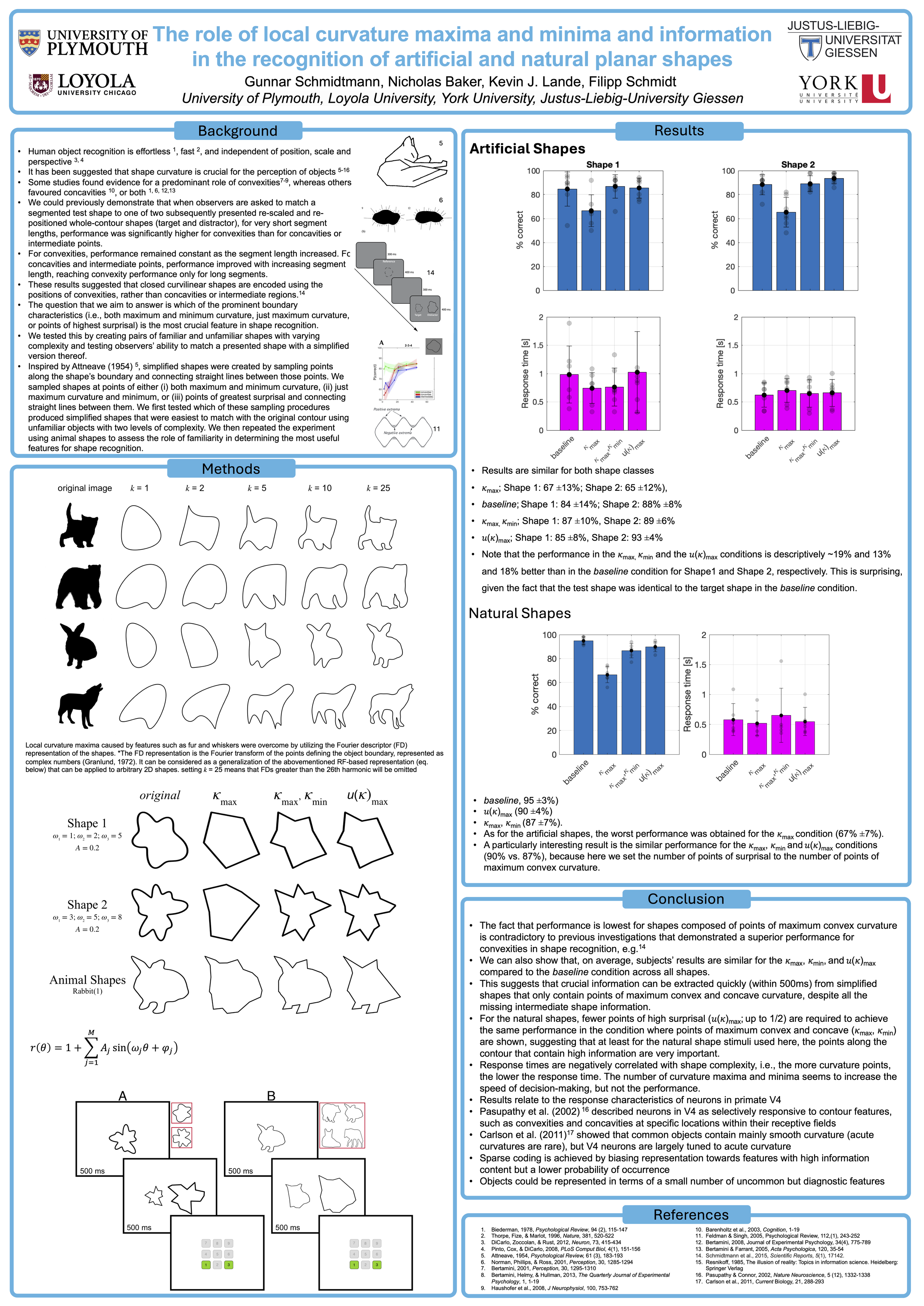The role of local curvature maxima and minima and information in the recognition of artificial and natural planar shapes
Gunnar Schmidtmann, Nicholas Baker, Kevin J. Lande, Filipp Schmidt
Eye & Vision Research Group, University of Plymouth, Plymouth, United Kingdom
Department of Psychology, Loyola University Chicago, Chicago, IL, United States
Department of Philosophy, Centre for Vision Research, York University, Ontario, Canada
Justus Liebig University Giessen, Department of Psychology, Giessen, Germany
The visual system is confronted with a vast number of shapes, both natural and artificial. Despite huge variation in the structure of objects and their retinal projections, humans recognize shapes quickly and accurately. How does the visual system represent this variety of shapes? There is a long history of theoretical and experimental investigations concerning the importance of specific features in shape recognition. Psychophysical evidence suggests that local curvature maxima (convexities) or minima (concavities) are of importance, and physiological studies found populations of V4 neurons selectively responsive to these features. Theoretical work using information theory shows that regions of curvature minima carry greater information than corresponding regions of curvature maxima. To study the role of points of curvature extrema and high information, we conducted a series of shape-matching experiments. The task for the observers (N=7) was to match a smooth reference shape (artificial or animal shape) to one of two subsequently presented re-scaled shapes (target and distractor), where the points of (i) maximum, (ii) maximum and minimum curvature, or (iii) maximum information were extracted and connected with straight lines. We also tested a baseline condition where the reference and target shape were identical. Results show that (i) performance is slightly better for natural than artificial shapes (95% vs. ~86%); (ii) performance for target shapes containing both, points of maximum and minimum curvature, and high-information content is equal to the baseline condition, but significantly better than performance for shapes only containing points of maximum curvature (65% vs. ~90%). Contrary to previous findings, points of curvature maxima alone do not provide sufficient information. Presenting points of maximum and minimum curvature or points of maximum information led to a significant gain in recognition accuracy, supporting the hypothesis that the visual system encodes shapes by biasing representation towards features with high information content.
